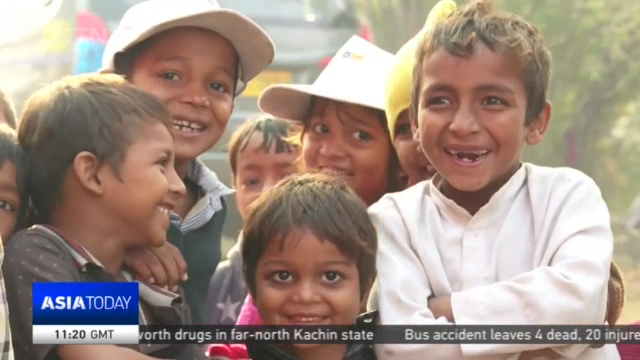
19:46, 15-Dec-2018
High Rate of Malnutrition in India: Why does India remain malnourished?
Updated
19:39, 18-Dec-2018
02:56

Despite the largest anti-malnutrition program, India is home to a third of the world's malnourished children. According to the Global Nutrition Report 2018, more than forty-six million children in India are stunted because of malnutrition and over 25 million more are defined as 'wasted' - meaning they do not weigh enough for their height. Our correspondent Ravinder Bawa tried to find out why India remains highly malnourished.
One-and-a-half-year-old Sanna weighs less than five kilos. Her weight has gone down from the last time she was weighed. Since her height is less than any child her age she is stunted. Like her, even Ayan was also found to weigh less than his age in this rural child care center in Nuh in the North Indian state. Many children in this village are malnourished and the care taker of center Sharda explains that the onus of this problem does not lie on them alone.
SHARDA, CARE TAKER RURAL CHILD CARE CENTER "If parents take care of their child, the health of the child will improve. We do our best to look after them when they are the center but we can't go to their houses to oversee the kids."
According to the Global Nutrition Report 2018 about more than 46 million children in India are stunted. One of the main factors is that the inter-generational cycle of under-nutrition is passed on from mothers to children. Experts also count many other factors including poor implementation of nutrition programmes.
SOHA MOITRA CHILD RIGHTS ACTIVIST "There is a lack of convergence between different departments there is an issue with the trained staff and there are issues of caste and gender which comes to play. An anganwadi worker being a higher class refuses to give food to a lower caste child in a village."
SRISHTI JAIN COO, FEEDING INDIA "They are giving say some food items according to prescribed quantity and calorie intake and what they are now moving forward and what we see as the next steps are adding more nutrients to the existing meal and making it a balanced meal. If not, more really fortifying the existing nutrients."
The government has started another new mission called National Nutrition Mission with the vision to ensure attainment of malnutrition free India by 2022. But till there is a political will to take the little ones seriously as the future stakeholders none of the new solutions will show results on the ground.
RAVINDER BAWA DELHI "Government's midday meal programme has been a good initiative but there are major problems with its implementation whether it be its reach or the quality of food provided to the children. In order to improve the nutritional statistics, the government has to not only ensure the smooth functioning of the programme but also focus in diversity of food items being given to the children. Ravinder Bawa, DELHI."

SITEMAP
Copyright © 2018 CGTN. Beijing ICP prepared NO.16065310-3
Copyright © 2018 CGTN. Beijing ICP prepared NO.16065310-3